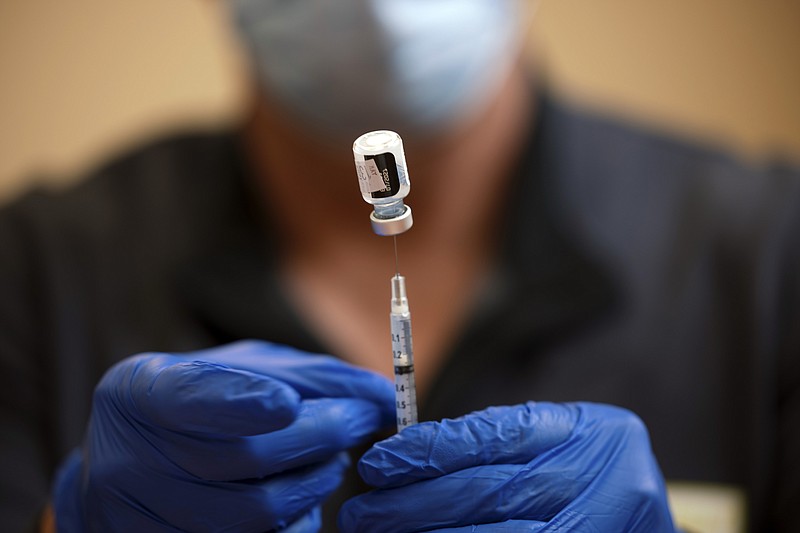"WHO says pandemic end in sight"
The headline above on this newspaper's from page Thursday sounded like an updated version of the famous Abbott and Costello routine about baseball, but it could be serious good news.
Just two problems.
WHO said it. The World Health Organization, that's who. And the world has lost much trust in the global agency for its pronouncements about the COVID-19 pandemic over the last two and a half years. Ditto for the Centers for Disease Control and Prevention in the United States. Though both organizations likely did the best they could with the information they had, the fact that they got some big things wrong at critical periods has made people skeptical about taking information from global or national health agencies to heart.
The second problem is found in the words "end in sight." To most people, "end in sight" means the virus would go the way of polio or smallpox, where nobody had to worry much about the disease because of vaccines. Though those diseases occasionally crop up in underdeveloped countries, they are practically unheard of in developed countries. With the COVID-19 virus, though, most scientists are saying it may become controlled by annual shots, similar to the flu vaccine.
Nevertheless, WHO said the number of coronavirus deaths worldwide last week was the lowest reported in the pandemic since March 2020.
You remember March 2020, right?
You left your job, you worked from home, your children attended school online, you couldn't see Mom in the nursing home, you couldn't attend that Elton John concert you had tickets for and you couldn't attend worship services in person.
We're past all that, of course, but things have changed. Workers now say they don't want to return to offices since they've proven they can do the same work from home. It's been proven students, on the other hand, fare much better with in-person learning and in fact that online classwork curtailed learning. And now many routine business meetings and even worship services are conducted online.
WHO, the United Nations health agency, reported that deaths fell by 22% over the past week to just over 11,000 worldwide. The global new case number was 3.1 million, a drop of 28% and a continuing drop over many weeks.
"We are not there yet," said the health agency's director-general, Tedros Adhanom Ghebreyesus, "but the end is in sight. ... Now is the time to run harder and make sure we cross the line and reap all the rewards of our hard work."
The agency suggested continuing virus testing and surveillance to be sure the declining number of cases is being maintained and to see if new variants are emerging.
Elsewhere, agencies were pushing for people to get their first vaccines, their second vaccines, their first booster and now a booster that targets both the original coronavirus strain and the lineage of the Omicron variant, which is responsible for most new cases.
Locally, the Hamilton County Health Department's administered vaccines are down to a trickle. On Sept. 11, the last reported date listed on the agency's website, only four doses were given. Five days earlier, only two doses were given.
The county has now reached 60% of its residents with at least one dose of the vaccine and 55.6% who are fully vaccinated.
And while deaths in the county related to the COVID-19 virus were zero for one week recently, they've still been between three and eight people per week since March.
Intensive care units in local hospitals housed only four COVID-19 patients on Sept. 13, but they had 18 COVID patients overall on Sept. 14. Sixty new cases were diagnosed on Sept. 14.
Of course, only the diagnosed cases were designated. With home tests, minor symptoms and no symptoms at all, the virus is obviously in many more people than records indicate.
The most positive aspect, though, is that fewer people are dying from COVID-19, vaccinated or not. So we would still advise people to get vaccinated and boosted -- especially senior citizens and those with compromised immune systems -- but acknowledge that many still do not feel comfortable doing it.
And that brings us back to Thursday's headline. The "end in sight" phrase reminds us of what U.S. and South Vietnamese officials said about the Indochina war in the 1960s and 1970s -- there being "a light at the end of the tunnel." In other words, the war had an end in sight. It didn't, though, at least not in the short run and not one that was satisfactory to either the U.S. or the South Vietnamese.
So, we urge people to use another political phrase -- "trust but verify" -- for the virus. Trust that WHO is right about the end being in sight but -- with your doctor's consultation -- get vaccinated to give yourself the best opportunity of not getting the virus, or getting seriously ill from it.
